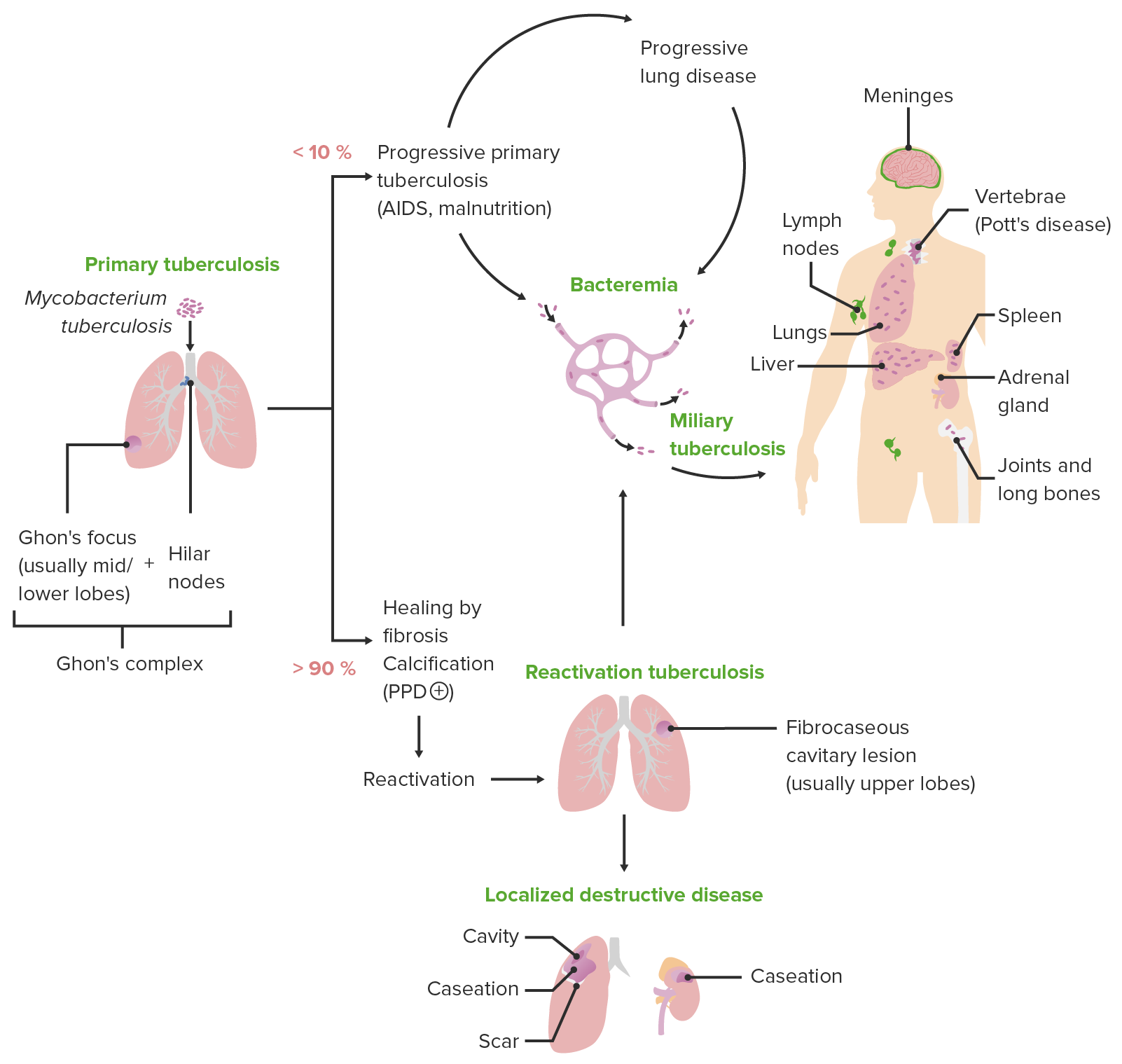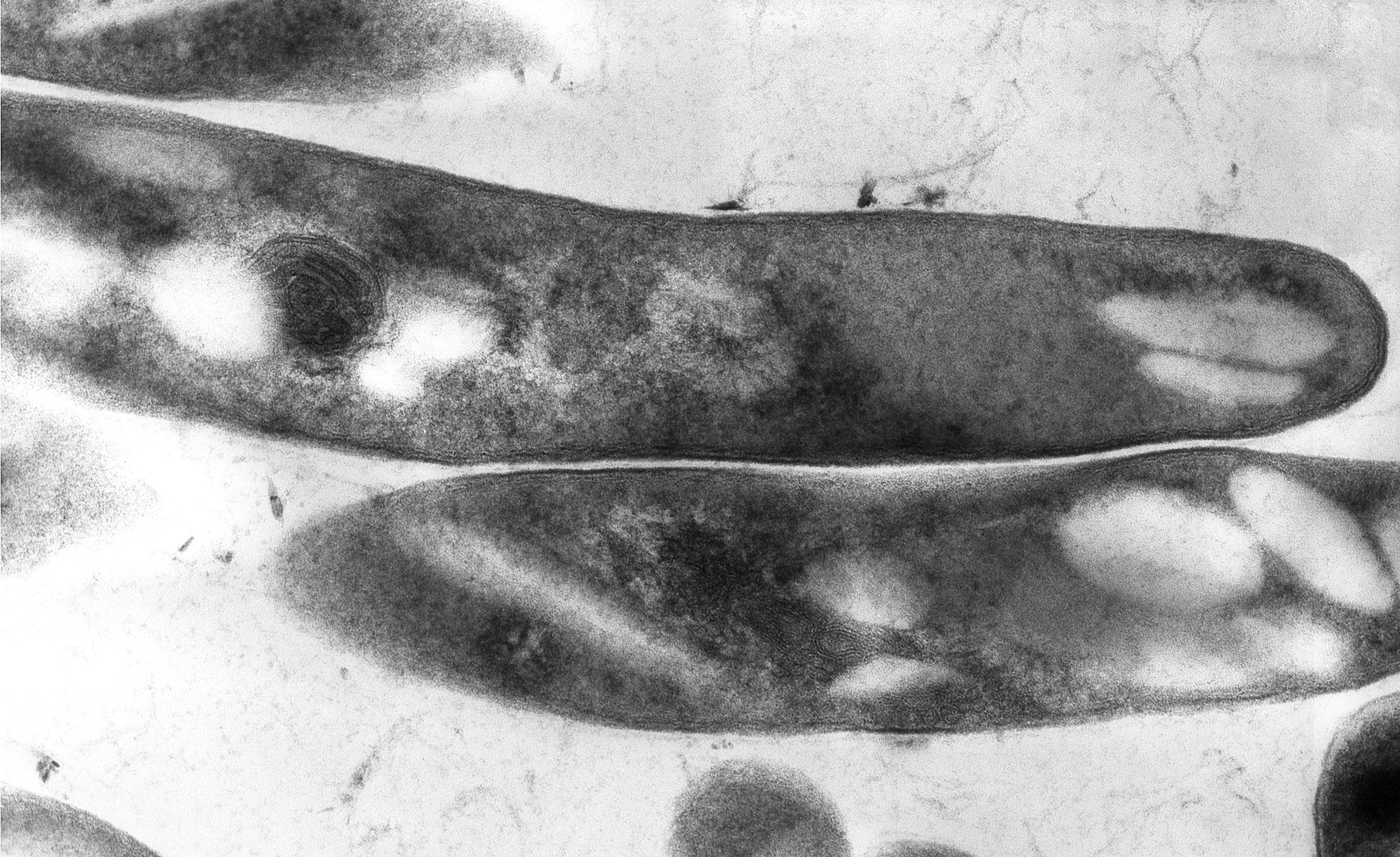Playlist
Show Playlist
Hide Playlist
Mycobacterium Avium-intracellulare
-
01-07 Mycobacteria.pdf
-
Download Lecture Overview
00:01 Now let’s turn to the last category, the atypical or the non-tuberculous mycobacteria, the classic one of which is Mycobacterium avium-intracellulare or MAI or as I said before Mycobacterium Avium-Complex, MAC - same organism, several different descriptives. 00:19 This is a very common opportunistic pathogen which you’ll see on patients with compromised immunity especially those with HIV-AIDS but it can occur in others as well. 00:29 However, note to those of you who are budding pediatricians, children also can acquire disease with MAI simply by ingesting the outside world or as we’d like to call it, sensory evaluation of the dirt on which they walk, because this organism and many other non-tuberculous mycobacteria exist in the soil and the water, it is very possible to inhale, aspirate, ingest, inoculate, any form of acquisition you can think of this organism. 00:59 Children are very good at putting soil and pebbles and other things in their mouths and sampling them. In that process, they may ingest, MAI, and precipitate a localized immune reaction causing a chronic lymphadenitis, a chronic cervical lymph node, that is something which is somewhat common in infectious disease offices. 01:22 It is not the sort of thing you’ll see that commonly however in human medicine. 01:26 What you will see is the onset of MAI disease in those who are at risk for opportunistic pathogens. 01:34 Healty patients may develop pulmonary disease if they have a healthy intact immune system, they may be infected with, meaning exposed to the organism but no disease will display itself. 01:46 For those who have an immunocompromised state such as those with a low CD4 lymphocyte count, they may develop nonspecific symptoms such as fevers, night sweats, weight loss, and focal lymphadenitis. 02:00 If they then have chest CT scan as you see demonstrated on the slide, one can see multiple areas or nodules of disease spread throughout the lung fields. 02:11 If one had an intact immune system, number one, one would not develop such disease, the nodules would not be present, but even if they had a few nodules, number two, they would be asymptomatic. 02:24 Transmission of the non-tuberculous or atypical mycobacteria as mentioned before, is the ingested of contaminated anything - food, water, soil, etc. and so forth. 02:36 Treatment for the non-tuberculous atypical mycobacterium is not the "RIPE" drugs, right? Really only used for treatment of MTB, instead, we treat it with one of the macrolide antibiotics clarithromycin or azithromycin, and at least one or two others including ethambutol and Rifampin. 02:59 These three together are typically used for at least six months in the case of the non-tuberculous lymphadenitis for the children and sometimes even longer than that in patients with HIV-AIDS, and chemotherapy induced immunosuppression disease. 03:18 Prevention. 03:20 There is no vaccine for the non-tubercolous mycobacteria but instead, it’s very important to maintain a high effective lymphocyte count because patients with HIV are especially susceptible to MAI disease and those patients who have a low CD4 count, they’ll be placed empirically or prophylactically on azithromycin as a way to prevent further proliferation of the organism once they inhale it or ingest it or anything else. 03:51 So, there you go, mycobacterium, one whole genus, a whole lot of diseases associated with that but the ones to remember are tuberculosis, leprosy, and non-tuberculous mycobacterial disease.
About the Lecture
The lecture Mycobacterium Avium-intracellulare by Sean Elliott, MD is from the course Bacteria.
Included Quiz Questions
Manifestation of disease after exposure to Mycobacterium avium-intracellulare complex is most likely if the CD4 cell count of a patient with acquired immunodeficiency syndrome falls below...?
- ...100/mm3.
- ...150/mm3.
- ...200/mm3.
- ...250/mm3.
- ...300/mm3.
Which of the following is considered the drug of choice for the prophylaxis of infection by Mycobacterium avium complex in an immunocompromised individual with a CD4 cell count of less than 50/mm3?
- Azithromycin
- Ethambutol
- Rifampin
- Isoniazid
- Pyrazinamide
Customer reviews
5,0 of 5 stars
| 5 Stars |
|
5 |
| 4 Stars |
|
0 |
| 3 Stars |
|
0 |
| 2 Stars |
|
0 |
| 1 Star |
|
0 |






